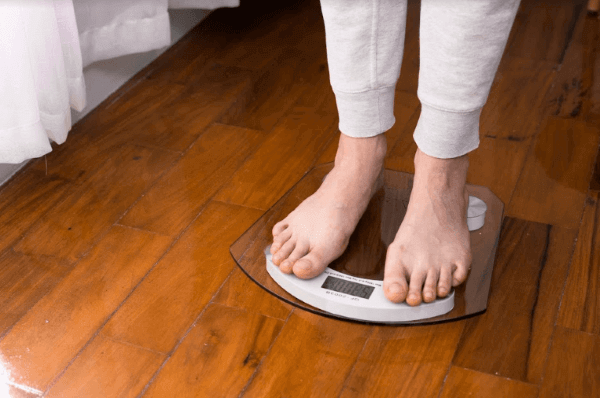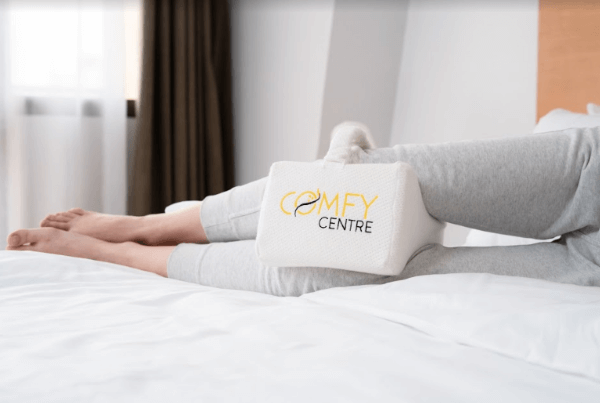Menu
Having a good night's sleep is essential. After a long and exhausting day, all you wanted to do is to hop on your bed and get that much-needed rest. But, rest isn't always easy to achieve, especially if you're enduring pain in your legs.
Leg pain is a common difficulty at night. Painful cramps and burning sensation can last for hours as your legs deplete from moving around all day.
The circulatory system is responsible for transporting blood, oxygen, and nutrients into all body cells. If blood flow in your body is reduced, you may start experiencing poor circulation symptoms, including numbness & muscle cramps.
How do you improve your legs' poor circulation to prevent discomfort at night? Let's look at the causes, symptoms, and remedies.
Peripheral artery disease (PAD), also known as poor leg circulation, is a circulatory problem that affects the narrowed arteries resulting in reduced blood flow to your limbs. While it commonly happens in the legs, peripheral artery disease can also trigger the peripheral arteries to the arms, stomach, and head. The arteries stiffen due to plaque accumulated in the arteries and blood vessels. Plaque blocks the normal blood flow into the vessels and results in poor leg circulation.
Poor leg circulation may also be a sign of larger health issues. It's best to always consult with your doctor to monitor other health complications such as diabetes, obesity, high blood pressure, or cholesterol that may worsen over time.

Atherosclerosis is one of the common causes of poor leg circulation. The fatty deposits build-up and compress the artery walls, resulting in reduced blood flow. It begins with damage to the thin layer of cells around the arteries or the endothelium, often resulting from smoking, high blood pressure, or high cholesterol. Once the endothelium is damaged, bad cholesterol penetrates the artery wall, causing plaque formation and, worse, limits the blood flow to your muscles.
There are also several common causes for poor body circulation due to genetic, lifestyle, or environmental factors.
Having excess fats in the body constricts your blood vessels and cause blood clots, leading to poor circulation. Aside from circulation problems, obesity can also lead to diabetes, sleep apnea, body ache, and more. Shed off some weight by performing daily activities such as light stretches and cardio.
Blood clot formation in the arms and legs may result in circulation issues. Blood clots are usually triggered by trauma, injury, or a wound within the blood vessel. When clots are developed, they move to the rest of the body, causing a pulmonary embolism, stroke, and cardiac arrest problems.
Too much sugar can disrupt and mess up your heart problems and raise the chance of being overweight. People with diabetes likely to have elevated blood pressure, heart disease, stroke or neuropathy. Heart difficulties can cause poor circulation, leading to cramping and numbing feeling.
Peripheral artery disease is when the blood vessels and arteries become more cramped. When the arteries harden, plaque begins to build up and limits blood flow. Poor circulation causes pain and boundaries in the nerves.
Varicose veins are dilated, twisted veins that happen anywhere in the body, more commonly in the legs. These spider-looking veins are caused by valve malfunction. These are not considered a severe health problem, but some may be uncomfortable with having them.
These commonly occur in most women and overweight persons and are often found in the back of the legs. Blood can't easily flow due to damaged veins leading to poor circulation.

People with poor leg circulation may encounter muscle pain and cramp in the legs. This pain is typically caused by physical, strenuous activity, like standing or walking, but goes away after a few minutes of rest. The pain location depends on narrowed artery's spot, which also affects different muscle groups (hip, thigh, foot, and calf).
Symptoms of poor leg circulation include:
If the poor circulation in your legs persists over time, you'll likely feel leg pain even when you're sitting or lying down.

The heart, body circulation, and sleep can affect each other. According to research, people sleeping less than 7 hours every night tend to have 40% to 60% lower microRNAs.
MicroRNAs are small ribonucleic acids that regulate gene expression by post-transcriptional repression of their mRNA targets. They control cell expression through the blood flow. Poor sleep can lower microRNAs that contain pro-inflammatory proteins needed for our cells' health. It can lead to poor circulation, heightening the risk for more infirmities such as cardiovascular diseases, stroke, or infections.

Sleep is restorative, so you must get enough of it. As we age, poor leg circulation is a common dilemma. Fortunately, there are simple habits and lifestyle adjustments you can make to lessen the pain associated with poor circulation in the legs. While consulting with your doctor is necessary for this situation, here are some ways you can do at home to improve circulation:
Although this can be difficult for someone enduring poor leg circulation, exercise has been exhibited to improve blood flow and lessen leg pain. A lack of physical activity is one of the leading causes of poor leg circulation.
Walking is an excellent activity for poor leg circulation as it promotes the new production of blood vessels in the legs while improving blood circulation. Start slowly by walking for 30 minutes three to five times a week and gradually increase the duration to 60 minutes.
Resistance training is another excellent way to promote blood circulation in your legs. It boosts muscle strength by allowing your muscles to work against weights or strength. It can also help minimize muscle pain and cramping from poor leg circulation. Exercises such as hamstring curls, leg extensions, leg press, and squats are highly effective. Start slowly, similar to walking, and then gradually increase as soon as you get used to it.
A healthy, well-balanced diet is vital in preventing plaque buildup in your arteries and reduce the risk of high blood pressure, obesity, and high cholesterol. Incorporate more antioxidants and omega-3 fatty acids in your meals and limit your sodium intake.
Good sleep refers to good sleep hygiene, and there are many things to improve sleep. Incorporate good sleeping habits in your routine by following any of these practices:
If you want to achieve a more comfortable rest at night, why not invest in quality products to effectively improve your sleep? Purchase excellent quality mattresses, bed frames, and adjustable beds that will enhance your sleep quality and lower complications brought by conditions such as diabetes.
Place a folded blanket or a knee pillow under your legs, enough to raise your knees three or four inches. This helps relieve the pressure on the legs' veins, promoting body circulation and keeping you comfortable while asleep.
An adjustable bed can also be an option. You can adjust the lower half of the bed to raise your feet. This helps reduce pooling since blood flow reverts to the heart caused by gravity, reducing the strain.
Poor leg circulation is a common phenomenon. Incorporating a few changes in your daily habits can help alleviate low blood circulation symptoms in your legs. If you have further concerns about your blood circulation, talk with your doctor to address a proper treatment. And if you're looking for temporary relief, consider using an excellent quality orthopedic knee pillow - specifically designed to relieve leg discomfort and pain. This cushion ensures you can attain a perfect sleeping position and better blood circulation in your legs. So, you won't find yourself troubled with tingling leg pain at night.